SHA and ACUA 2022 Election Results
SHA and ACUA 2022 Biographic Statements
- BOARD OF DIRECTORS
- SECRETARY
- SHA RESEARCH EDITOR
- NOMINATIONS AND ELECTIONS COMMITTEE
- ACUA BOARD OF DIRECTORS
- ACUA TREASURER
BOARD OF DIRECTORS
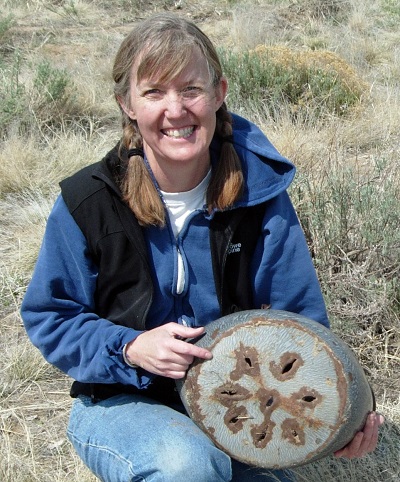
Name: Bonnie J. Clark
Present Position: Professor and Curator for Archaeology, University of Denver
Education: Ph.D., Anthropology, University of California at Berkeley; M.A., Anthropology, University of Denver; B.A., Anthropology, B.A., English, University of Utah
Professional Service to SHA and Other Societies: Society for American Archaeology (SAA): Member, Committee for Scholarships and Awards; Committee Chair (past), Excellence in Curation, Collections Management, and Collections-Based Research and Education Awards; North American Japanese Garden Association: Board Member; SHA: Member (past), Nominations Committee; National Collaborative for Women’s History Sites: Board Member (past)
Research Interests: collaborative archaeology, landscape archaeology, Western North America, archaeology of the 20th century
Biographical Statement: I began my archaeological career with a job surveying a pipeline the length of the state of Utah. Researching homesteads along that corridor was my first taste of historic archaeology, and also led me to an interest in applied heritage management. As an M.A. student at the University of Denver I crafted an archaeobiography of a Victorian-era Cheyenne woman, research that continues to shape interpretations of the archaeology of the Santa Fe Trail, especially the site of Boggsville: https://www.historycolorado.org/story/articles-print/2021/03/05/understanding-amache. An interest in how identity is lived in places continued to shape my dissertation research while at the University of California, Berkeley. My research on two 1880s Hispanic settlements is published On the Edge of Purgatory: An Archaeology of Place in Hispanic Colorado (2011).
Since 2003, I have taught in the Anthropology Department at the University of Denver (DU), where I am now Professor as well as the Curator for Archaeology of the DU Museum of Anthropology. I teach a variety of courses there including Historical Archaeology, the Anthropology of Place, and Archaeology of Gender. Since 2005, I have led the DU Amache Project, a community collaboration committed to researching, preserving, and interpreting the physical history of Amache, Colorado’s WWII-era Japanese American incarceration camp (https://portfolio.du.edu/amache). That work has been presented in popular forums, like Archaeology magazine, as well as the book Finding Solace in the Soil: An Archaeology of Gardens and Gardeners at Amache (2020). In 2021, I was the recipient of the State Honor Award from Colorado Preservation, Inc.
Given the qualifications and experience outlined in your biographical statement, what do you believe you can contribute to SHA if elected?
Although primarily an academic, I have been involved in compliance archaeology in a wide range of settings (city, state, and federal lands). My experience with Amache, which was recently made a National Historic Site Act in part because of the research and community building of the DU Amache Project, has convinced me that academic partners can be powerful vectors for historic preservation while at the same time contributing to robust research. I have little patience for the supposed academic-applied divide in our field and will strive to be a bridge when necessary.
My career has involved almost every kind of site found in the Western U.S. and so I bring a depth of experience in this region to the SHA. Having served on the National Register of Historic Places review board for Colorado, I’ve seen how archaeological studies on the wealth of public lands in the West is shifting more and more to historic sites. I can contribute to the dialogue on what we as a society need to be doing to wrestle with both the boon and the consequences of that shift.
As a professor, I see how training in all aspects of our field—theory, ethics, laboratory methods, field methods, curation, interpretation—creates well-rounded emerging practitioners. The M.A. is one of the most useful degrees an archaeologist can have if working in the applied sector and DU is a terminal M.A. program. I work closely with my alumni and continue to monitor what knowledge and skills they need to be hired and to succeed and that is knowledge I would bring to the organization.
If elected to serve SHA, what priorities would you emphasize?
I have spent the last 18 years involved in a collaborative archaeology project, one that incorporates local and descendant high schoolers, undergraduate and graduate students, and volunteers who are site survivors or descendants. This grassroots archeology and heritage work has radically changed how I see our field. I am committed to shifting the paradigm to value the process of archaeology as much as the product. Only if we take seriously the impacts of how we do our work can historical archaeology live up to its promise as an avenue for positive social change. This happens through systemic changes such as pushing for funding structures that recognizes community expertise, building in accountability to stakeholders, and pushing for academic recognition of collaborative work. These are all systemic changes in which professional organizations like the SHA must be leaders.
The SHA has always been a welcome home and important training ground for students, something I will push as a continuing priority. Having been the beneficiary of an SHA dissertation publication contract, I have experience in how those publications help emerging professionals, but also ways the program might be refined. If elected, I would want to work with the SHA in ensuring the continuing success of endeavors like the dissertation award publication series and the Past Presidents Student Reception.
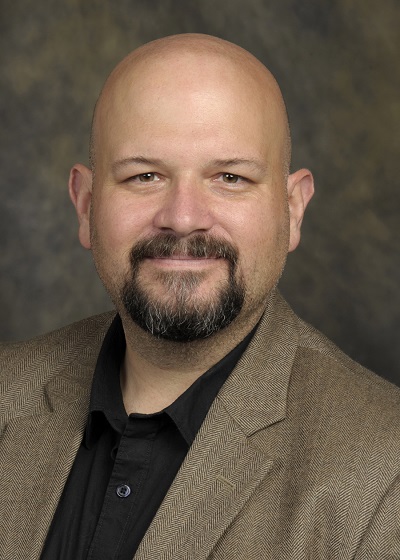
Name: Edward González-Tennant
Present Position: Assistant Professor, University of Texas Rio Grande Valley
Education: Ph.D., Anthropology, University of Florida (2011); M.A., Anthropology, University of Florida (2008); M.S., Industrial Archaeology, Michigan Technological University (2004); B.A., Anthropology, University of Arkansas (2004)
Professional Service to SHA and Other Societies: SHA: Workshops Coordinator, Annual Conference, 2021–present; Chair, Technologies Committee, 2019–present; Member, Conference Committee, 2022–; Member, 2003–present; Register of Professional Archaeologists: Member, 2006–present; Archaeological Institute of America: President, Central Florida Chapter, 2020–2022; Cedar Key Historical Society: President, 2020–2021; ICOMOS-ICIP: Vice President for Digital Technologies, 2015–2018; Monmouth University: Director, Anthropology Graduate Program, 2013–2015; Director, GIS Program, 2011–2015; Chair, Fulbright Program Campus Committee, 2012–2015; UF Journal of Undergraduate Research: Member, Editorial Board, 2009–2010
Research Interests: digital archaeology, historical archaeology, public history; landscape, memory, power, violence; GIS, 3-D modeling, geophysics, remote sensing; Southeastern U.S., Caribbean
Biographical Statement: My research focuses on the application of digital technologies in archaeology and history. I strive for a transdisciplinary approach combining geographic information systems (GIS), 3-D modeling, geophysics, and remote sensing to address complex issues. These issues include legacies of racial violence in African American history, decolonizing collaborative archaeology in the Caribbean, effects of ethnolinguistic differences on Chinese migration, and modeling the impacts of storm surge and sea level rise on heritage resources in rural America. This work is possible because of a firm commitment to partnering with descendant communities, their allies, and the general public. I maintain an active public speaking schedule while my consulting work focuses on building local capacities with many of the same communities where I conduct research. I also teach workshops and offer other training resources on digital archaeology via my AnthroYeti YouTube channel.
I began my undergraduate studies as a first generation student at the University of Arkansas in 2001, earning a B.A. in Anthropology (2004). I enrolled in my first archaeological field school during this time (2001), which investigated the homes of enslaved and free African Americans at the site of Van Winkle’s Mill. In addition to supporting two successful Student Undergraduate Research Fellowships (SURF), this experience motivated my earlier interest in the archaeology of race and racialization leading to a Fulbright Scholarship to study Chinese Diaspora communities in New Zealand and elsewhere. My interest in digital technologies—GIS, geophysics, remote sensing, and 3-D modeling—led me to an M.S. in Industrial Archaeology at Michigan Tech (2005) for work in Spitsbergen, Norway. My dissertation expanded on these earlier interests in digital technologies, history, and social justice. Research focusing on the 1923 Rosewood Massacre form the basis of my M.A. (2008) and Ph..D (2011) degrees from the University of Florida.
Given the qualifications and experience outlined in your biographical statement, what do you believe you can contribute to SHA if elected?
I have been an active member of the SHA for 20 years, presenting my first poster at the 2004 meetings in St. Louis. That experience led to a funded M.S. program at Michigan Tech, which provided me with a strong set of methodological and intellectual skills for my additional graduate work at the University of Florida. I know first-hand the benefits SHA membership can have for students.
My contributions to the SHA center on working with others in the organization who have and/or embrace a hybrid academic-professional practice. There is a clear and immediate need for archaeological organizations to work with both academics and professionals to mentor students whose futures lie outside the academy (aka alt-ac, or alternative to academic positions). My own post-Ph.D. career has involved a mix of tenure track, non-tenure earning, and managerial positions in both university and cultural resources management (CRM) settings. I regularly draw on these experiences to secure external funding from state, federal, and private sources which I use to financially support undergraduate and graduate students (e.g., pay hourly wages, cover housing costs). My students regularly draw on these experiences to enter graduate programs, gain employment with private firms, or enter federal service with the U.S. Forest Service, FEMA, and other agencies.
Additionally, my work with descendant communities adds to the growing chorus of historical archaeologists who seek to center diversity, equity, and inclusion in our practice. I look forward to working with current and future officers who understand that new priorities face the SHA, and indeed all archaeological organizations in the 21st century. The SHA has made tremendous strides regarding the engagement of historically underrepresented communities. Learning to listen to the perspectives of others is skill that must be taught and shared. My experience with creating oral history and other community-driven projects has relied on genuinely listening to these experiences, and decentering myself (and research goals) in service of supporting community-led histories. This is a primary way of ensuring that our individual interests are equal to, and not positioned above the interests of the public whom I believe we serve.
If elected to serve SHA, what priorities would you emphasize?
I was first drawn to historical archaeology because it allowed me an alternative, hands-on approach for engaging with the historical past. I count myself fortunate that my undergraduate and graduate experiences included training in transferable skills (e.g., GIS, digital heritage) as well as firm commitments to working alongside various publics. However, like many others, my experiences as an archaeologist included psychologically challenging chapters as well. I will focus on three on priorities if elected to serve the SHA Board of Directors.
As a first generation student, I understand how alienating academic spaces are for many. The need for mutual aid networks is perhaps greater now than ever. I look forward to assisting with the SHA’s firm commitment to expanding our work on diversity, equity, and inclusion by working with existing programs, and by supporting other SHA members and officers who work on these efforts with other groups/societies (e.g., Black Trowel Collective, SEAC Task Force on Sexual Harassment and Assault).
My second priority is to expand SHA’s commitment to providing high-quality training opportunities. Our annual workshops offer student, academic, and professional archaeologists a chance to update and/or learn new skills. I have offered several of these workshops on GIS and digital heritage for the SHA, SAA, and other groups. With the SHA, as Workshop Coordinator and Chair of the Technologies Committee, I get see all the wonderful opportunities our members have to expand their skills. As a board member I look forward to building/expanding the SHA’s website to include more training resources and explore ways of certifying our workshops with the Register of Professional Archaeologists (RPA) or a similar group, as the SAA currently does.
My third and final priority mirrors those of many recently elected officers. Specifically, addressing inclusion through the removal of various systemic barriers. While the SHA has taken steps to address the often prohibitive costs of memberships and conference attendance, work for all archaeological societies remains in this regard. I look forward to not only working with fellow SHA officers to address this, but assisting our organization in becoming a leader in this regard for other organizations.
SECRETARY
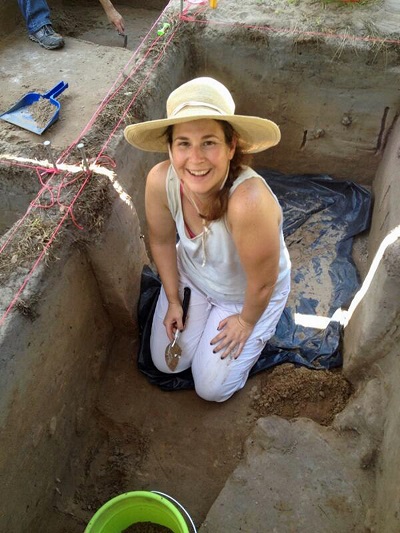
Name: Sarah E. Miller
Present Position: Director, Northeast and East Central Regions, Florida Public Archaeology Network, St. Augustine, Florida
Education: M.A., Anthropology, East Carolina University, 2001; B.A., History, Secondary Education, Cornell College, 1995
Professional Service to SHA and Other Societies: SHA: Secretary, 2020–present; Member, Board of Directors, 2016–2019, Chair, Heritage at Risk Committee, 2017–present, SHA Representative to Heritage Emergency National Task Force, 2018–present, Chair, Public Education and Interpretation Committee, 2011–2016; Nominations and Election Committee, 2013 and 2019; Popular Chair for Amelia Island Conference Committee, 2010; Society for American Archaeology (SAA): Chair, Ethics Revision Task Force II, 2018–2022; Member, Public Education Committee, 2018–2021: Chair, Local Advisory Committee for 2016 Annual Meeting; Southeastern Archaeological Conference (SEAC): Chair, 2020–present, Member, 2013–present, Public Outreach Grant Committee; Center for Archaeological Synthesis: Board of Directors 2018–2021; Project Archaeology: Member, Leadership Team, 2012–2018; State Coordinator for Florida, 2006–present; Journal of Archaeology Education: Member, Editorial Board, 2017–present
Research Interests: heritage education; site stewardship; climate crisis/heritage at risk; public archaeology; interpretation; cemetery preservation; ethics; advocacy; North American historical archaeology
Biographical Statement: It’s an honor to be in the running again for Secretary of SHA. Currently I serve as Regional Director for the Florida Public Archaeology Network (FPAN), recipient of the 2015 Daniel G. Roberts Award for Excellence in Public Historical Archaeology by SHA. A current project close to my heart is our People of Guana Project using the North American Heritage at Risk (NAHAR) research pipeline. This project is a collaborative endeavor working with NOAA’s National Estuarine Research Reserve Science Collaborative, the Gullah Geechee Cultural Heritage Corridor, and NPS’s Timucuan Preserve to look at modeling the estuarine landscape for marsh migration, monitoring sites, meeting with the public, working from that feedback to develop methods to further study and ultimately mitigate some areas of the site. We also work closely with the Gullah/Geechee Nation to record African American sites in northeast Florida where development is a constant threat. During the pandemic I helped form the North American Heritage at Risk (NAHAR) working group with Lindsey Cochran and Meg Gailliard that works in tandem with SHA’s Heritage at Risk Committee. As part of my work for FPAN I developed training programs for professionals and non-professionals in heritage education, archaeology advocacy, cemetery preservation through the Cemetery Resource Protection Training (CRPT) program, and understanding the impacts of the climate crisis on cultural resources through the Heritage Monitoring Scout (HMS Florida) program. I received my Master’s degree in Anthropology from East Carolina University in 2001 after developing archaeology education programs at Tryon Palace in New Bern under the supervision of Charles Ewen and Patricia Samford. Upon graduation from ECU, I supervised lab and field projects for the Kentucky Archaeological Survey, including excavations at the Henry Clay Estate under Principal Investigator Kim McBride, and also served as a reviewer for compliance projects at the Kentucky Heritage Council (SHPO).
Given the qualifications and experience outlined in your biographical statement, what do you believe you can contribute to SHA if elected?
I believe in cultivating a positive culture of service at SHA and am grateful for the years I served on the board and as Secretary. Some of the most important issues in my career in historical archaeology have come before the Board and the Executive Committee during the last few years. A major highlight was the opportunity to review and contribute to the MOU with the Society of Black Archaeologists, of which I am also a member. A more difficult highlight was the challenge of a virtual conference during covid-19 and implementation of the Conference Code of Conduct policy for the first time during the 2021 conference. Keeping our members safe was paramount, both from the global pandemic and from sexual harassment and assault. My greatest joy is working with other SHA members. SHA runs on its committees and the more Board Members can attend to the needs of these committees, the more we are directly serving membership. In my time on the Board it’s been a privilege to serve as Board Liaison to the Academic and Professional Training Committee, the APT Student Subcommittee, and now the History Committee.
Previously I said if elected I would work to expand communication to membership throughout the year, as well as continue networking with national and international partners on behalf of SHA. Since then the Social Media consultants were selected and as they started I had the opportunity to work very closely with them as the Social Media Chair for the 2021 conference. I continue to serve on the Social Media advisory committee and work closely with the SEED consultants to support their communications to membership online. I am in regular contact with my Heritage at Risk Committee members throughout the year and our standing Friday meeting for NAHAR is another opportunity to network throughout the year between conferences. Our committee produces monthly content to the SHA Blog and submits regularly to the Newsletter. I hope I can further advise other Committees to keep regular communications with their members as historical archaeology generates so much interest and information throughout the year.
If elected to serve SHA, what priorities would you emphasize?
If re-elected to serve as secretary, I would continue to work diligently to support diversity, equity, and inclusion initiatives. After the murder of George Floyd, President Heath called upon the board to brainstorm a list of action items that was then ranked in priority order. Immediate action is one of the hallmarks of SHA and members worked together to take immediate action. I supported and will continue to support reduced membership rates and scholarships for underserved members of SHA. At the invitation of Past President Heath I attended the partnership meeting of SBA, SAA, SHA, and ACRA to survey SHPOs for consolation and outreach with African Americans and the nomination of African American sites to the NRHP organized by Maria Franklin. I will continue at SHA and in my work at FPAN to address the imbalance in reporting and recording of African American sites. I will continue advocacy efforts to support the federal African-American Burial bill and similar state bills, such as Florida’s African-American Burial Bill. It was an honor to work with past President Joe Joseph on reviewing material for the SHA website, providing local examples and resources to the Coalition for American Heritage for abandoned African American cemeteries, and continue to ask my elected officials to support the legislation. I continue to attend Cultural Heritage Partner’s seminars and trainings to keep abreast of progress on the bill and what advocacy efforts I can contribute to in my home state. And finally, as a board member I supported and participated in both Dr. Stollman’s Antiracism workshop in 2020 and the follow up “Where Do We Go From Here? Antiracism, Equity, and Inclusion” workshop in 2021. The Board participated in focus group discussions with Dr. Stollman as part of SHA’s Diversity Audit. I found the discussions so critical that I follow up with similar listening sessions with my staff at FPAN to push antiracism, equity, and inclusion further in our day to day jobs.
SHA RESEARCH EDITOR
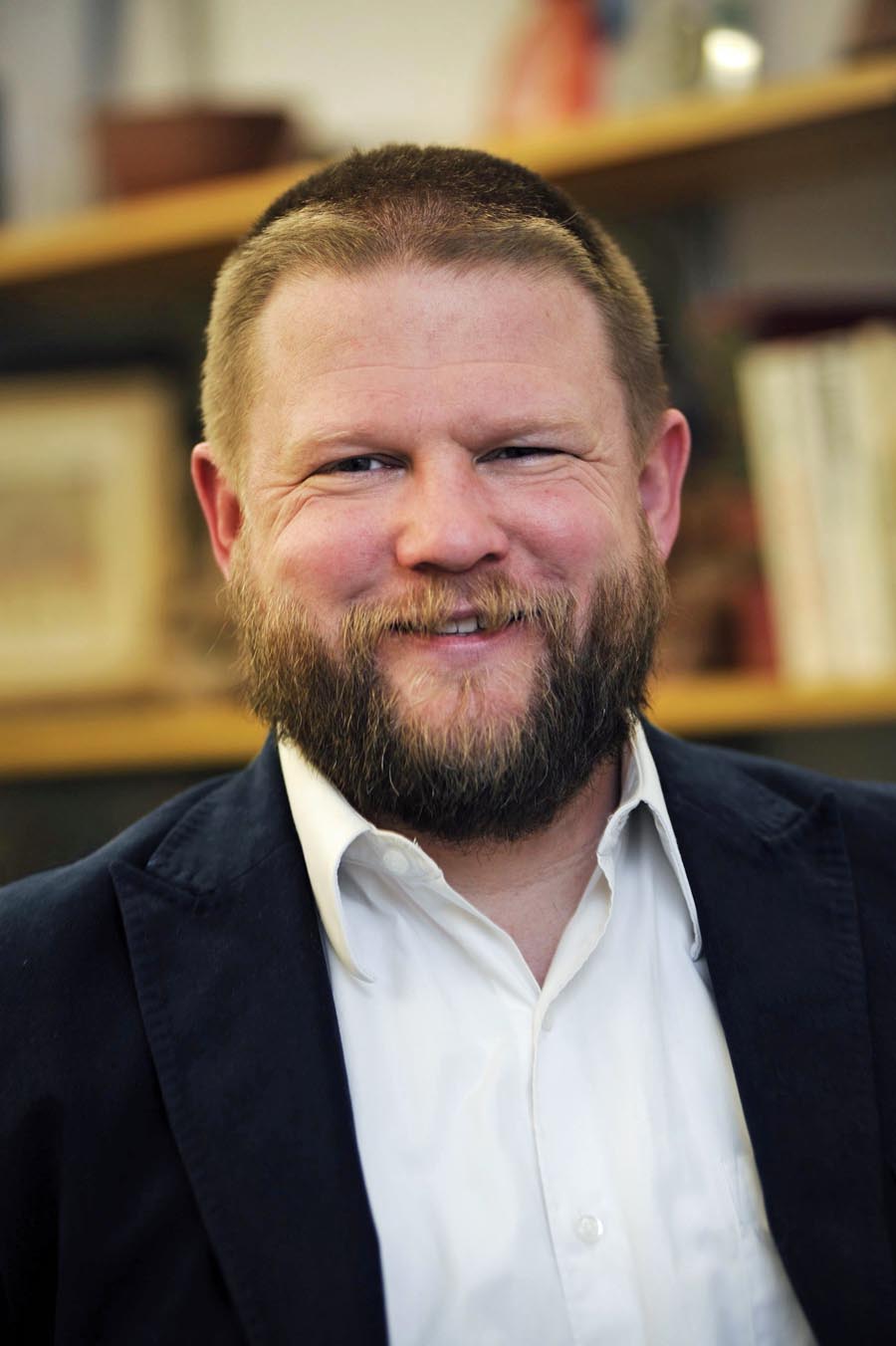
Name: Ben Ford
Present Position: Professor and Chair, Anthropology Department, Indiana University of Pennsylvania
Education: PhD, Texas A&M University; MA, College of William and Mary; BA, University of Cincinnati
Professional Service to SHA and other societies:
SHA Co-Publications Editor (2020-Present); SHA Board of Directors (2013-2016); SHA Technologies Committee (2009-2016); SHA Technical Briefs Editor (2015-2018); SHA Gilmore Dissertation Prize Committee (2014-2019); RPA Standards Board (2015-2018); Pennsylvania Historic Preservation Board (2019-Present)
Research Interests: Maritime and historical archaeology of eastern United States; maritime cultural landscapes; cultural resource management and historic preservation.
Biographical Statement:
I am the Chair of the Indiana University of Pennsylvania (IUP) Department of Anthropology where we offer undergraduate tracks in Applied Anthropology and Archaeology, as well as a MA degree in Applied Archaeology. Prior to IUP, I worked in CRM for several years, intermixed with graduate school. Throughout this time, I have been an active member of SHA – I joined in 1999, have attended nearly all annual meetings, and have filled several volunteer roles. My current research focuses on 18th-centruy connections across the Mid-Atlantic and includes research at two town sites, as well as underwater archaeology projects in Lake Erie.
Given the qualifications and experience outlined in your biographical statement, what do you believe you can contribute to SHA if elected?
If elected, I would attempt to represent as many of the SHA constituents as I am able. My research spans terrestrial and underwater archaeology and I have worked in both academic and applied contexts, making me uniquely suited to hear and understand the concerns of many Society members. For those members whose experiences differ from mine, I pledge to use the listening and consensus building skills that I have learned as a department chair to represent them to the best of my ability. As an engaged member of SHA, I have thought deeply about the direction of the Society in terms of diversity, public outreach, fostering new members, and ensuring value for CRM professionals, but I would also endeavor to seek out and learn from members so that the Society best meets their needs and objectives.
If elected to serve SHA, what priorities would you emphasize?
If elected as the Research Editors representative to the SHA Board, my priorities would center on the role SHA publications within the society. I would draw on the wisdom of the Society’s editors and associate editors to best serve the members through all the Society’s publications and partnerships. I see the publications as a means to amplify the ideas of SHA members – ideas about archaeology and the SHA. SHA publications allow ideas and concerns from throughout the Society to receive full consideration. I would also emphasize the relevance of historical and underwater archaeology to the public. The SHA membership has a significant amount of insight and wisdom regarding the modern world. As a member of the SHA Board, I would use the information access and privilege of the position to strengthen how the publications serve the Society and the public.
NOMINATIONS AND ELECTIONS COMMITTEE
In order to ensure some continuity on the Nominations Committee SHA is moving to having Nominations Committee members serve two-year terms. In this year’s election the candidate receiving the highest number of votes will serve a two-year term. In subsequent years the Nominations Committee election will be electing one candidate annually.
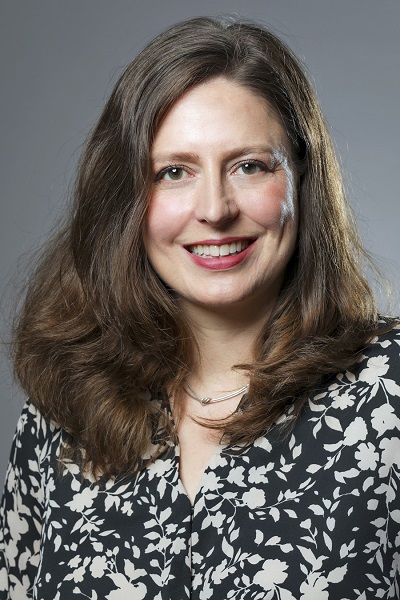
Name: Rebecca S. Graff
Present Position: Associate Professor of Anthropology, Department of Sociology and Anthropology, Lake Forest College, Lake Forest, IL
Education: Ph.D., Anthropology, University of Chicago, 2011; M.A., Anthropology, University of Chicago, 2001; B.A., Anthropology, University of California, Berkeley, 1999
Professional Service to SHA and Other Societies: SHA: Chair, Academic and Professional Training Committee, May 2022–present; Member, Academic and Professional Training Committee, 2015–2022; Member, Jamie Brandon Graduate Student Paper Prize Committee, 2018–2021; Illinois Historic Sites Advisory Council: Appointed Member (2022–2024); Midwest Historical Archaeology Conference: Member, Steering Committee, 2011–present; Co-Chair, MHAC Chicago conference, 2018; Register of Professional Archaeologists: Member, 2017–present; Illinois Archaeological Survey: Member, 2011–present; Theoretical Archaeology Group (TAG): Member, Conference Planning Committee, University of Chicago, 2013; Central States Anthropological Society: Editor, Anthropology News Column, 2001–2003
Research Interests: 19th- and 20th-century urban United States, temporality and modernity; consumption, waste, and material culture; historic preservation, urban renewal, and contemporary heritage; contemporary archaeology; world’s fairs and expositions. Region: North America/Midwest
Biographical Statement: I am an anthropology professor at a small liberal arts college outside Chicago, where I rely on my undergraduate students and the field schools I run for them to create the data for my research. Previously, I taught undergraduate and graduate students as a postdoctoral instructor in the Master of Arts Program in the Social Sciences (MAPSS) and as a lecturer in the College (both at the University of Chicago). I was also a Visiting Assistant Professor in the Department of Social Sciences and Industrial Archaeology and Heritage Program (Michigan Technological University). I have excavated in Israel, France, Honduras, and the Bahamas, in addition to U.S. sites on the West and Gulf Coasts and in the Midwest.
My book, Disposing of Modernity: The Archaeology of Garbage and Consumerism During Chicago’s 1893 World’s Fair (2020), was based on a project focusing on the ephemeral “White City” and Midway Plaisance of the 1893 Chicago Fair and the modern disposal practices seen at the Louis Sullivan- and Frank Lloyd Wright-designed Charnley-Persky House. The book was a co-publication with the SHA after winning the Kathleen Kirk Gilmore Dissertation Award. In Chicago, I have also directed excavations at the Haymarket Martyrs’ Monument (2016), the Gray-Cloud House (2018), and the Mecca Flats (2018). Recently, I directed survey at the Edith Farnsworth House, returning to my original training on indigenous Chicagoland, and I co-directed excavations in Detroit as part of an ongoing partnership with a local artist and arts organization. I am currently co-facilitating my institution’s land acknowledgment process and co-curating an exhibit on race and the built environment with my colleague from the Society of Architectural Historians. My current research is focused on the archaeological relationship with studies of the built environment in U.S. cities.
Given the qualifications and experience outlined in your biographical statement, what do you believe you can contribute to SHA if elected?
I teach as the sole archaeologist at a small liberal arts college where the vast majority of my students do not intend on being anthropologists or archaeologists. This feeds into my research and service interests because I must grapple with translating the goals of historical archaeology to an audience who may not ever return to it, but could benefit from engaging with it.
I benefited from the SHA in so many ways that I feel particularly motivated to give back with my labor and the expertise I developed from this group. The Jelks Graduate Student Travel Award allowed me to attend and present at my first SHA meeting and introduced me to practicing archaeologists beyond my elite university setting. The continued support of SHA has been instrumental in my professional development, not least with the boost I received from winning the Gilmore Dissertation award when I was a contingent faculty member. My work on the APTC and the Student Paper committee has shown me where SHA is and challenged me to think about where we need to go. Co-organizing the recent revisions of the Syllabus Clearinghouse has helped me see how historical archaeology is being taught in higher education settings, and how that ultimately affects employment in public and private sector work.
My current role on my state’s historic preservation board has equipped me with a broader understanding of the U.S. system of historic significance and integrity, and where archaeological practice might intervene to diversify and increase equity in the ways we nominate properties. This also means that I am working more closely with the SHPO and archaeologists outside of higher education institutions, so I am more aware of the diversity of our profession in terms of careers and employment, and how that needs to feed back into our elected positions. I take seriously SHA’s recent work to diversify its membership, being more inclusive of personal identities, occupational categories, and international breadth of our practitioners. This must continue on all levels, including the candidates identified by the Nominations committee.
If elected to serve SHA, what priorities would you emphasize?
The COVID-19 pandemic, coupled with the summer 2020 civil rights activism around the murders of George Floyd and Breonna Taylor, made clear the connections between spatiotemporally diverse sites and peoples, calling forth a renewed awareness of our intricate global ties and the current injustices that many were privileged enough to ignore. It reminds us that archaeological research that exists in a vacuum is not as meaningful, as high-quality, or as impactful as that which is discussed and made through collaborations. It demands that those in privileged positions reprioritize how we channel our energies in the future.
As compared to many sister organizations, the SHA has accomplished more in trying to address racial injustices and inequity. But obviously there is much more to be done in several dimensions. If elected, I will work to identify SHA members to run for positions that bring in diverse academic, professional, and international experiences to the table, all with conversance with the SHA’s organization, accomplishments, and places where we need to do better. Similarly, the candidates that the members of the Nominations and Elections committee should be putting forward for office must represent the current membership of the organization and, at the same time, we must look to what we want SHA to be in the future. I will work to identify archaeologists who work for academic institutions—not just those from elite R1s, but people doing good work in the entire gamut of settings, from R1s to SLACS to Community Colleges; CRM and contract archaeologists; government archaeologists; museum archaeologists; and those archaeologists who are precariously employed in academia or elsewhere but deserve a seat at the SHA table. These nominees should likewise draw from those with expertise in underwater and terrestrial research contexts the world over.
These candidates must be poised to help craft and get legislation passed to protect archaeological resources, support work on public-facing digital projects, combat unequal access to resources, and stand in solidarity with our members and with other organizations when dog whistles like replacement theory or repatriation-as-erasure are blown.
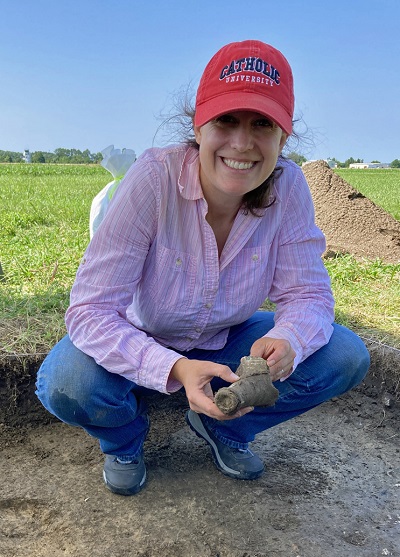
Name: Laura E. Masur
Present Position: Assistant Professor of Anthropology, Catholic University
Education: Ph.D., Anthropology, Boston University, 2019; M.A., Anthropology, William and Mary, 2013; B.A., Anthropology/History, William and Mary, 2010
Professional Service to SHA and Other Societies: Council for Northeast Historical Archaeology: Member, Executive Board, 2015–present; SHA: Member, Academic and Professional Training Committee, 2020–present; Council of Virginia Archaeologists: Member, Threatened Sites Committee and Skiffes Creek Committee, 2021–present
Research Interests: public and community archaeology, collections-based research, environmental archaeology, African Diaspora, Jesuit missions, religion, Chesapeake/Middle Atlantic
Biographical Statement: I am an Assistant Professor in the Anthropology Department at the Catholic University in Washington, DC, a position I have held since 2019. I have over ten years of experience in historical archaeology, and I strongly value public and community engagement. Currently, I direct a community research project that involves descendants of Jesuit-enslaved ancestors (GU272) in the excavation of a system of plantations in Maryland. This project is strongly influenced by descendant goals; we are currently finishing a website and set of educational lessons that interpret archaeological evidence to a public audience. In my own projects, I implement the values that I have learned through training and collaboration with William and Mary, Boston University, Colonial Williamsburg, Alexandria Archaeology, the Fairfield Foundation, Crow Canyon, and St. Mary’s City.
Career development for students and recent graduates is also an important part of my professional focus. I provide advising as well as field and laboratory training opportunities in the greater Washington, D.C. area, especially for students who do not have access to a car. I want the next generation of historical archaeologists to know that publicly-oriented projects, professional training, and high quality research can be integrated.
Given the qualifications and experience outlined in your biographical statement, what do you believe you can contribute to SHA if elected?
My current project is possible because I am working at several sites where extensive Phase I surveys have already taken place. Archaeological research is a collaborative venture—and we all benefit from dialogue and partnerships, especially across the academic-professional divide. The Society for Historical Archaeology exists to foster such collaborations and dialogues, among archaeologists working in CRM, museums, government agencies, and academic institutions. Today, some of the most in-depth excavations at extraordinarily rich sites take place in the professional realm. Moreover, the goals of professional and academic archaeologists (excavation, legal compliance, public interpretation, teaching, publication) are complementary. Much of my professional training came from non-academic archaeologists, and many of my current trainees are not students at my university. I would work to make opportunities for research collaboration, training, professional development to become more open and formalized.
I have experience in committee work and leadership in the Society for Historical Archaeology, Council for Northeast Archaeology, and the Council of Virginia Archaeologists, which I believe would be beneficial in the SHA Nominations Committee.
If elected to serve SHA, what priorities would you emphasize?
I would emphasize developing collaborative relationships between professional and academic archaeologists. These collaborations are important not only for producing good research, but for providing training opportunities to students and developing professionals. Getting necessary training for a career in archaeology can be extremely difficult without a strong professional network, especially for first generation students and students of color. I would prioritize enhancing opportunities such as low-cost field schools, paid internships, and formalized research opportunities for undergraduate and graduate students.
ACUA BOARD OF DIRECTORS
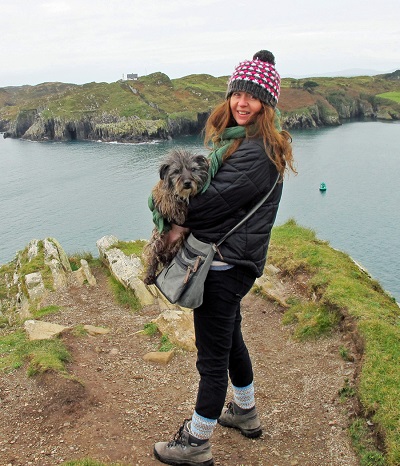
Name: Connie Kelleher
Present Position: Senior Archaeologist, National Monuments Service, Department of Housing, Local Government and Heritage, Ireland; Visiting Lecturer in underwater archaeology, Archaeology Department, National University of Ireland, University College Cork
Education: Ph.D., Archaeology & History, Trinity College Dublin, Ireland;
M.A., Maritime Archaeology, National University of Ireland, University College Cork, Ireland; B.A., Maritime Archaeology, National University of Ireland, University College Cork, Ireland
Professional Service to the SHA/ACUA and Other Societies: I have been a long-standing member of the SHA since I attended my first conference in Quebec, Canada in the year 2000. I was elected to the Board of the ACUA in 2010 serving for 4 years, and was re-elected for a second 4-year term serving until 2017. During my time on the ACUA Board I served on several committees, including the Nominations Committee, Recreational Diving Committee; Abstract Review Committee, Submerged Workshop Committee and the Graduate Student Review Panel. I am former Chair and current standing member of the Irish Post-Medieval Archaeology Group (IPMAG); Past Council member of the Royal Society of Antiquaries in Ireland (RSAI); I am a member of the European Scientific Diver Panel (ESDP) and the Nautical Archaeology Society (NAS); I am a full member of the Institute of Archaeologists of Ireland (IAI) and have been Department representative for the UNESCO working group on underwater archaeology.
Research Interests: history and archaeology of piracy in the 17th-century Atlantic; postmedieval shipwreck archaeology; maritime landscapes; management of underwater cultural heritage; climate change impacts on underwater cultural heritage
Biographical Statement: Dr. Connie Kelleher has worked as a professional archaeologist for nearly 25 years and has been in the National Monuments Service (NMS) since 1999. She is senior archaeologist for the Licensing and Planning Unit (LPU), where she manages a team of 10 archaeologists, and is also senior archaeologist in charge of the UNESCO World Heritage Property of Sceilg Mhichíl; Connie is also an active diver with the Underwater Archaeology Unit (UAU). As part of her underwater work, Connie has directed surveys and excavations on a range of shipwreck sites, dating from the 16th to 19th centuries. These include the 1588 Spanish Armada wrecks of La Trinidad Valencera and La Juliana, the 1628 Spanish galleon Santa Ana Maria and currently, is investigating medieval human remains, logboats and artefactual finds from the River Shannon. Connie received her B.A. degree in 1995 and M.A. degree in 1998 from University College Cork (UCC), focusing on topics relating to maritime landscapes and shipwreck archaeology; she received her Ph.D. in 2013 from Trinity College Dublin on the history and archaeology of early 17th-century piracy in the North Atlantic. As well as her full-time work, Connie has been lecturing academically for nearly 20 years; she is visiting lecturer in the Archaeology Department of UCC for over 10 years, delivering the introductory course on UCH. Connie has also been invited lecturer in several other universities, including Bristol University, Melbourne University and East Carolina University. Connie is a professional, commercially-trained diver with Parts IV, III and I (Bell top up) HSE accreditation; she has been diving since the early 1990s in both her professional capacity but also as a recreational diver when time allows, having PADI and CMAS diving qualifications.
Publications include peer-reviewed papers in historical archaeological journals and individual book chapters. Book publications include: C. Kelleher, 2020. The Alliance of Pirates: Ireland and Atlantic Piracy in the Early Seventeenth Century (Cork University Press); F. Moore, C. Kelleher, K. Brady, C. McKeon & I. Lawler, 2019. RMS Lusitania: The Story of a Wreck (Government of Ireland Publications).
Given the qualifications and experience outlined in your biographical statement, what do you believe you can contribute to ACUA/SHA if elected?
I am honored at being invited to stand for election to the Board of the Advisory Council on Underwater Archaeology. As a long-term member of the SHA and having served two consecutive terms on the Board of ACUA from 2010, I have a first-hand understanding of the operational elements of the ACUA/SHA, its core principles and ethical standards. My own work and career to date as a professional archaeologist working with the Heritage Service in Ireland very much aligns with those principles and standards and, if elected to the Board, I will bring that experience with me and work to ensure that the ACUA/SHA’s missions and goals are advanced and promoted, particularly in Ireland and the North Atlantic region, where the need to protect our historical archaeology continues to be a challenge. This is particularly so in the face of developmental pressures, especially with the emphasis on renewable energy but also from the growing risk of climate change impacts. My work in the management and protection of underwater archaeology, including legislative input to advance Ireland’s ratification of the UNESCO Convention, has provided me with key insight into the importance of collaboration, on an international stage, if positive progress is to be achieved. I will bring that approach of inclusivity with me, which is a key principle of the ACUA and the SHA and will continue to promote the need to apply professional standards and best practice to the study and investigation of underwater archaeology.
If elected, what priorities would you emphasize, taking into consideration the ACUA and SHA missions and goals, ongoing committee activities, and the management and financial challenges of the society?
Through my previous tenure on the board of the ACUA, and as part of my own work, I recognize clear priorities in promoting best practice and ethical standards but I also recognize that this involves education, sharing of knowledge and providing support and guidance. The ACUA is best placed to provide that guidance, on an international stage, through the wealth of expertise within its own practitioners in the field of underwater cultural heritage who can advise and guide the process. But it is not enough to convince those working in underwater archaeology, there is a need to persuade those who may have diverging interests too, whether avocational divers, development-minded stakeholders or the community at large; through engagement and discourse, however, common ground and understanding can often be found. As before, if elected to the Board, I will continue to work to encourage professional standards, whether through contributing to the Submerged Cultural Resource Awareness Committee that importantly reaches out to both archaeological and non-archaeological practitioners, or to encourage the ratification of the UNESCO Convention and adoption of the Rules of the Annex. I will draw on my own experience with advancing Ireland’s ratification of the Convention, and the benefit of the adoption of the Annex Rules as best practice. I will continue too to contribute at the Government Managers’ Meeting, a valuable forum which provides the opportunity to share ideas, highlight issues and discuss management needs. From my many years of lecturing, I recognize the importance of education and the need to support and encourage students to follow careers in underwater archaeology. This is critical if we are to assure the future of underwater archaeology as a profession, including persuading academic institutions to develop teaching programs that include UCH. The ACUA has a proud record of involving graduates at all levels and assisting with developing their careers, whether through the mentoring committee, grant support or as graduate associate members. I would welcome the opportunity to be part of the ACUA’s work in this regard and to advance it by reaching out to graduate students in Europe and the North Atlantic region but also to universities and encourage them to consider their curricula; to not alone promote awareness of the ACUA and its advisory role but encourage new blood into the profession and lead the way as future underwater archaeological practitioners.
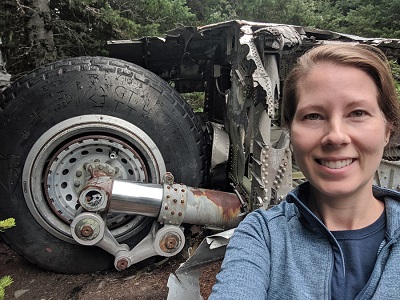
Name: Megan Lickliter-Mundon
Present Position: Team Lead, Underwater Archaeology Project, Defense POW/MIA Accounting Agency
Education: Ph.D., Nautical Archaeology, Texas A&M University, 2018; M.Sc., Archaeology, University of Edinburgh, 2005; B.A., Anthropology, University of Georgia, 2003
Professional Service to SHA and Other Societies: I have not served SHA or ACUA in a professional capacity, but I have volunteered for the conference when able. I have spent the majority of my professional service time with several museum and non-profit cultural heritage organizations. I was Secretary of the Houston Aeronautical Heritage Society for four years, and a member of the South Eastern Texas Museums Association, and served as their Secretary then Treasurer from 2009 to 2013. I was nominated for a council position with the Texas Association of Museums in 2010. I have also served on the planning committee for the Mutual Concerns of Air and Space Museums Conference from 2018 to present. I am also a member of the Explorer’s Club and the American Alliance of Museums.
Research Interests: diver-integrated ROV wreck site survey; site mapping and photomosaic rendering; aluminum conservation research and experimentation; 3-D laser scanning of heritage objects; archaeological process displayed in museums; public dissemination of archaeological process
Selected Publications:
Lickliter-Mundon, M. and Beemster-Levrentz. (expected 2022) Monitoring Underwater Aircraft Sites in Lake Washington. In Lickliter-Mundon, M. and H. Whitehead, eds. Strides Towards Standard Methodologies in Aeronautical Archaeology. Springer Proceedings Publication.
Lickliter-Mundon, M. 2019. Examples of Site Formation Processes on Deepwater Aircraft. In Proc of the First Intl Conference on Aviation Archaeology & Heritage, pp. 97–114. MidSea Books, University of Malta.
Lickliter-Mundon, M., Cantelas, F., Coble, W. et al. 2018. Identification of a Deep-water B-29 WWII Aircraft via ROV Telepresence Survey. Journal of Maritime Archaeology. 13:167.
Biographical Statement: Dr. Megan Lickliter-Mundon is the Lead Archaeologist for the Underwater Team with the Partnership and Innovations (PI) Directorate within the Defense POW/MIA Accounting Agency (DPAA). Megan’s previous experience with DPAA includes Senior Underwater Archaeologist, and prior to her coming on board at DPAA she partnered with the PI program as Lead Archaeologist for Project Recover, a partner non-profit organization.
Dr. Lickliter-Mundon is an archaeologist and museum professional with a broad range of experience in the heritage sector. She received an M.Sc. in Archaeology from Edinburgh University and a Ph.D. in Anthropology from the Nautical Archaeology Program at Texas A&M University, specializing in underwater aviation archaeology. She also holds graduate certificates in heritage preservation, metal artifact conservation, and has specialized in museum studies for over 20 years.
During the course of her archaeological career, Megan has directed or participated in terrestrial and historical underwater projects in Europe, the Atlantic, and the Pacific. She has been involved in both dive surveys and ROV/AUV deep water surveys with NOAA, OET, Air/Sea Heritage Foundation and Vulcan-R/V Petrel. Prior to returning to graduate studies for her Ph.D. she was the director of a local aviation history museum housed in a historic air terminal. She volunteers for and has served on the board of several non-profit museum organizations and is dedicated to museum development.
Given your qualifications and experience, what do you believe you can contribute to the ACUA/SHA if elected?
I believe that coming from a well-rounded background of academia, non-profit service, multiple federal agencies, consultancies, and amateur enthusiast organizations has given me the ability to anticipate priorities and viewpoints from a range of cultural heritage stakeholders. Through working as a facilitator for a museums consultant group I’ve learned how to link factual information to relevancy and help translate ideas into action. I’ve also developed and directed several archaeological surveys and understand the requirements for successful projects.
If elected, what priorities would you emphasize, taking into consideration the ACUA and SHA missions and goals, ongoing committee activities, and the management and financial challenges of the society?
Underwater archaeology is a tight-knit community where SHA feels a little like family. We who are fortunate enough to attend receive the latest updates on projects, key participants, and the latest technologies and innovations that are being tested on projects around the world. I would like to focus on developing two areas where I think that ACUA and SHA can have a bigger impact. The first is with graduate programs that have strong archaeology programs and a local maritime heritage history or modern community, but no current underwater archaeology coursework or resources. A good example is the Pacific Northwest region, which hosts a network of maritime cultural heritage institutions, but lacks a variety of underwater archaeology education, training opportunities, or internships. I think ACUA can develop a presence, or help those communities build their own access to these types of underwater archaeology resources.
The second area is helping to foster the drive, creativity, and insight to communicate underwater archaeology to the general public. Communication of the relevancy of underwater archaeology’s methods, new technologies, project outcomes, and protection of cultural heritage resources helps create an environment where those ideas are commonplace. Those ideas then create a better platform for interest from diverse communities, the next generation of scholars, and stakeholders from varying viewpoints. I think that some of the more powerful tools for community outreach are through museums and live survey or excavation telepresence, where we’re not just telling the public the results of a project—we’re showing them how we learned. I’ve been working with various museums on linking research on underwater aircraft to modern aviation museum display and creating those strategic links from history to current activity, which appeal to a broader audience. It would be my hope that ACUA can work to engage our communities in these ways.
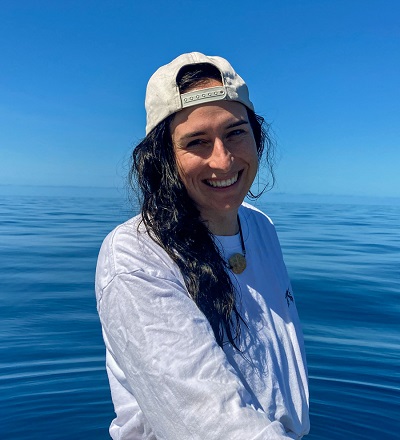
Name: Maddy McAllister
Present Position: Senior Curator, Maritime Archaeology, Queensland Museum Network & James Cook University
Education: Ph.D., University of Western Australia, 2018; Master of Maritime Archaeology, Flinders University, 2012; Bachelor of Archaeology, 2010
Professional Service to SHA and Other Societies: I attended my first SHA Conference in 2021—virtually during Covid restrictions and am currently in the final stages of editing a paper for a special proceeding volume from our session. As an ECR, I look forward to attending more SHA conferences and contributing in the future. Outside of SHA, I am currently the Vice President of the Australasian Institute for Maritime Archaeology (AIMA) and have served in this role since 2018. I co-coordinated the conference in both 2019 and 2021, participating as a panelist at several of these conferences. I am also a counselor for the Australian Association of Maritime History (AAMH).
Research Interests: wooden shipbuilding—17th to 19th century; archaeological visualization; site formation processes (specifically: reef systems); copper alloy analyses; science communication
Select Publications:
In review McAllister, M. Massey, T. and Price, S. Bursting the Bubble: Reflecting on 50 years of maritime archaeological research in Queensland. Australian Archaeology.
In review McAllister, M. van Duivenvoorde, W and Philpin A. Mystery Wrecks on the reef: copper alloy analyses of fasteners from Kenn reef. Society for Historical Archaeology special conference proceedings, 2021 Conference.
2021 McAllister, M. The problem of ‘digital realism’ and underwater archaeology: photogrammetric 3D visualization and interpretation, The International Journal of Nautical Archaeology. https://doi-org.elibrary.jcu.edu.au/10.1007/s11457-021-09305-0
Biographical Statement: Maddy McAllister is a maritime archaeologist who has spent over a decade working on underwater sites across Australia. In 2012, she completed her undergraduate and master’s degree at Flinders University (Adelaide, Australia) before working as an Assistant Curator at the Western Australian Museum for 3 years. From 2014 to 2018, Maddy completed her Ph.D. at the University of Western Australia exploring underwater 3-D photogrammetry and visualization of shipwreck sites. In 2018, she took up a role as a state maritime archaeologist for Heritage Victoria (Melbourne, Australia) focusing on maritime and underwater cultural heritage management for the state.
In 2019, Maddy became the Senior Curator of Maritime Archaeology for the Queensland Museum Network and James Cook University. In this co-appointed role, she undertakes research, teaches into undergraduate courses, supervises postgraduate students, curates a range of exhibitions, all while managing the maritime archaeological collection housed at the Museum of Tropical Queensland (Townsville, Australia). She has a passion for wooden ship construction and site formation processes—particularly on reef environments such as the Great Barrier Reef. This is reflected in forthcoming research projects involving analysis of shipwreck material from sites along the Queensland coastline.
Maddy is also driven by the challenge of reframing how the public sees shipwrecks and maritime archaeologists—not as treasure hunters but specialists providing insight into our past. For the past 4 years Maddy has sought to change this public perception by providing a glimpse into the daily life of a maritime archaeologist across social media platforms. Her amazement for shipwrecks shines through in her communication style—vibrant, enthusiastic, and relatable. This is further highlighted in her voluntary roles as Vice President and Outreach coordinator for the Australasian Institute for Maritime Archaeology (AIMA).
Given your qualifications and experience, what do you believe you can contribute to the ACUA/SHA if elected?
I believe that my qualifications and experience working in Australasia brings a unique perspective to the ACUA Board of Directors. The Australasian region has a vast array of ongoing UCH research including submerged cultural landscapes, Indigenous sites and seascapes, historic shipwrecks, World War II sites, amongst others. The unique histories of the Australasian region means that many of these projects are collaborative, with teams spanning multiple nations and cultures. While the ACUA board currently has an excellent level of representation across the United States of America, Mexico, Denmark and Guadeloupe—there is a gap in representation from the Asia Pacific region that I would be proud to fill.
ACUA highlights a drive to safeguard irreplaceable sites and promote a robust and inclusive narrative of maritime history, and I strive to complete this in my daily roles and outreach. I believe that I can bring my practical, approachable, and calm characteristics alongside my passion for outreach to this role. My passion extends to communication of our research to public and non-academic fields indicating my skills in knowledge translation and capabilities in removing jargon and effectively discussing matters concisely. I believe this will be a great benefit to ACUA.
The future of maritime archaeology is collaborative and I am actively finding novel ways to address issues in underwater archaeology through interdisciplinary teams. For example, I am currently working with coral biologists on a multi-facetted approach to understand the role of SS Yongala in the marine environment. In addition, I am leading a team of archaeologists and geoscientists on an upcoming project to investigate elemental and isotopic analyses of shipwreck material to push the boundaries of what we know.
Lastly, while I am an ECR, I do not see this as a disadvantage. I bring a unique perspective from my recent transition from student to professional. I understand current issues faced by students and have the drive, motivation, and determination of an ECR in pursuing my own role in international UCH issues and discussions. I am hungry to contribute and to work towards ACUA’s missions and goals.
If elected, what priorities would you emphasize, taking into consideration the ACUA and SHA missions and goals, ongoing committee activities, and the management and financial challenges of the society?
Although I do not have a long association with SHA or ACUA I have been particularly impressed and supportive of your actions to strive for diversity of representation within ACUA and our wider discipline to ensure that no voices are lost. I believe that I can focus on encouraging more diversity and voices from my geographical region of the world. The long distance between Australasia and the home of SHA/ACUA, combined with restrictions with time zones can be a hindrance for representation from my region, I would strive to support others and increase our representation within discussions, decisions and wider aspects of ACUA.
I also believe in supporting and encouraging students and avocational researchers in our field. ACUA and SHA strive to support students and I would prioritize this as an ongoing commitment for the next 4 years. In summary, I am motivated to contribute, to learn and to provide a balanced view as one of the ACUA board. I would happily embrace the financial, management and social challenges that the board faces over the following four years.
ACUA TREASURER
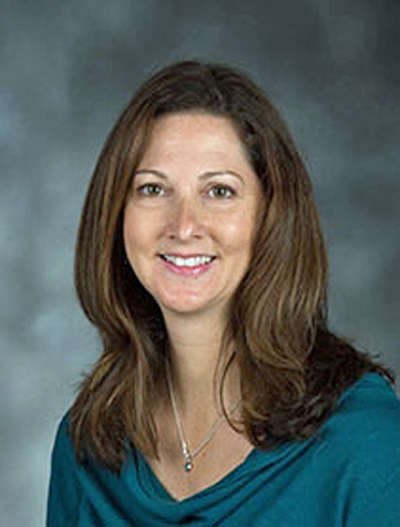
Name: Amy Mitchell-Cook
Present Position: Chair and Professor, Department of History and Philosophy, University of West Florida
Education: Ph.D., History, Pennsylvania State University; M.A., Maritime Archaeology and History, East Carolina University; B.A., Anthropology, University of Florida
Professional Service to SHA and Other Societies: I have served on numerous committees and volunteered as a co-lecturer of the Submerged Cultural Resources Workshop, served as a panelist on various conference discussion panels, served as ACUA Education Committee chair, and ACUA Treasurer for 6 years.
Research Interests: maritime history, early American social and cultural history, public history, material culture
Biographical Statement: Dr. Amy Cook teaches maritime history, Atlantic world, early America and 19th century women. She has written numerous chapters, articles and book reviews on the subject. Her book, Sea of Misadventures: Shipwreck and Survival in Early America, is based on more than 100 accounts of shipwreck narratives from 1640 to 1840, and explores the issues of gender, race, religion and power, and how it reflected on Americans in Anglo-American society. She co-wrote the chapter, “The Maritime History of Florida,” in the book, The New History of Florida, which is the first comprehensive history of the state to be written in a quarter of a century. She also co-wrote a chapter in Methodology in La Belle: The Archeology of a 17th Century Ship of New World Colonization, on the methods archaeologists in Texas used to record and excavate the French ship that sank off the coast of Texas in 1685. In 2006 and 2007, Cook and Della Scott-Ireton, associate director of the Florida Public Archaeology Network, received funding from The History Channel’s, The Save Our History Grant Program to partner with a Ferry Pass Middle School to help preserve the Colonial Archaeological Trail, a series of outdoor exhibits that feature Pensacola’s colonial past.
Given the qualifications and experience outlined in your biographical statement, what do you believe you can contribute if elected to the ACUA Board of Directors?
Although my current position is chair of the department of history, my past is rooted in archaeology. I have experience working on projects that include CRM and state and federal institutions. As such, I have a strong understanding of the varied complexities and constraints that professionals must face to preserve our past. In addition, my position as a professor at the University of West Florida allows me the unique opportunity to have firsthand knowledge of graduate and undergraduate students as they hone their skills to become future underwater archaeologists. In this position I am very aware of the need to facilitate, mentor, and promote future generations of scholars and professionals. I also represent one of the few universities with a focus on underwater archaeology and have an inside perspective of the issues that affect higher education.
If elected to serve on the ACUA Board of Directors, what priorities would you emphasize, considering the missions and goals of SHA and ACUA, ongoing committee activities, and the management and financial challenges of the society?
I think it is important to emphasize ACUA’s mission to promote education, especially in regards to graduate students and the public. I would like to extend current efforts by ACUA/SHA for young professionals to become involved in both groups and to give them the tools to become the next generation of archaeologists. One of the projects with which I am most interested is a series of surveys we implemented to better understand the job market, student and faculty needs. The culmination of this project will be a comprehensive overview of what skills students need as they enter the ‘real world.’ I also feel that ACUA has become a prominent vehicle for public outreach. As a member of ACUA I support and encourage efforts to educate students and the public and to provide opportunities necessary for them to understand and protect our cultural heritage in the 21st century. In addition, I have served 8 years as ACUA Treasurer and so I have a thorough understanding of the organization’s finances and how they relate to the SHA. I serve on several committees with ACUA that demonstrate my continued dedication to make sure ACUA can support and maintain an important and positive relationship with SHA.



